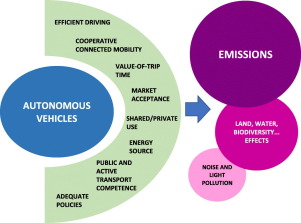
Title: EU-Supported Research Paves the Way for Autonomous Freight Transport in Europe
By Bárbara Pinho
In the near future, Europe’s highways may witness a surge of cutting-edge, driverless trucks—more streamlined than their conventional versions, designed to transport goods across nations without a human operator. These self-sufficient vehicles, chiefly funded and created through EU-sponsored initiatives like MODI, are transforming the logistics sector in Europe.
As the EU grapples with an escalating shortage of skilled truck drivers and strives to enhance the safety, efficiency, and sustainability of freight delivery, the introduction of autonomous trucks presents a viable solution. Building on years of research in automation and connectivity, European scientists are now translating theory into practice on public roads.
Fast-Tracking Automation Integration
While smaller autonomous shuttles have been in operation near airports and within limited urban areas for some time, large-scale heavy-duty self-driving trucks are still in preliminary development stages. However, progress is underway. The MODI initiative, led by Director Ragnhild Wahl from ITS Norway, is crucial for promoting the integration of freight automation on public roadways.
“This project aims to lay the groundwork for the widespread deployment of fleets of automated vehicles,” Wahl remarked, highlighting the groundbreaking potential of driverless trucks in global cargo transportation.
MODI aspires to achieve Level 4 automation—vehicle independence on designated routes without the need for a human driver. Outfitted with sensors, radars, high-definition cameras, and AI-driven control systems, these advanced trucks are ready to navigate intricate environments and respond to challenging conditions autonomously.
To guarantee safety and efficacy, MODI researchers are investigating real-world scenarios along major transport routes—from bustling ports to border crossings—addressing obstacles and devising solutions for the smooth incorporation of autonomy into logistics operations.
Addressing the Truck Driver Shortage Dilemma
One of the pressing motivations for automation is the significant increase in unfilled truck driver positions. The International Road Transport Union (IRU) projects that by 2028, Europe may confront a shortfall of 745,000 drivers—approximately 17% of the industry’s total workforce. Contributing factors include an aging workforce, insufficient new hires, and difficult working conditions.
Pia Wijk, project manager at Swedish logistics innovator Einride and a partner in MODI, emphasizes that automation not only alleviates the shortage but also boosts safety: “The shortage of drivers is quite severe and is only expected to escalate in the upcoming years. Autonomous technology offers us a secure and scalable approach.”
Enhancing Road Safety and Efficiency
In addition to increasing capacity, autonomous trucks promise a reduction in road accidents. A recent study published in Nature, assessing actual crash data, has indicated that autonomous vehicles, when designed and implemented properly, generally surpass human drivers in various driving tasks and accident prevention.
In 2024 alone, an estimated 19,800 people lost their lives in traffic incidents across the European Union. As the EU aims for its Vision Zero objective—eradicating fatalities on its streets by 2050—driverless trucks could play a crucial role, equipped with systems that analyze millions of data points every second to identify dangers and respond more swiftly than human drivers.
Efficiency is another significant advantage. Autonomous trucks do not require rest breaks, enabling them to function continuously, thereby ensuring reliable cargo delivery and minimizing congestion in supply chains.
Experimentation on Europe’s Transport Backbone
MODI’s research extends beyond laboratory settings. A 1,200-kilometre test corridor from Rotterdam (Netherlands) to Oslo (Norway) serves as a testing ground for autonomous freight solutions. This route includes a variety of driving conditions, busy ports, four national borders, and both EU and non-EU customs processes—crafted to replicate the complexities of long-distance transportation.
Particular pilot tests are in progress to address challenges in various locations:
– In the Port of Rotterdam, researchers are examining the safe and effective integration of autonomous vehicles in mixed-traffic scenarios.
– In Hamburg, the focus is on how driverless trucks navigate between highways and urban roads.
– Trials in Gothenburg are investigating hub-to-hub logistics, including automated charging and loading/unloading stations.
– Moss, Norway is testing vehicle-to-infrastructure communication and cross-border tolling utilizing real-time data.
Einride’s autonomous trucks, for instance, have already commenced commercial operations on public roads in Sweden since late 2024, transporting items for one of the country’s leading e-pharmacies.
From Ports to Public Thoroughfares: A Gradual Journey
Nevertheless, experts warn that complete deployment on open roads will take time. Confined spaces such as ports and warehouses are likely to be the first areas to adopt these technologies due to simpler regulations and controlled variables.
“For long-distance freight transport, automated trucks will need to travel at high speeds over extensive distances, so their implementation will need careful planning,” Wahl stated.
Beyond technical and safety considerations, societal acceptance remains crucial. Decades ago, the notion of a vehicle operating without a driver seemed far-fetched. Today, services